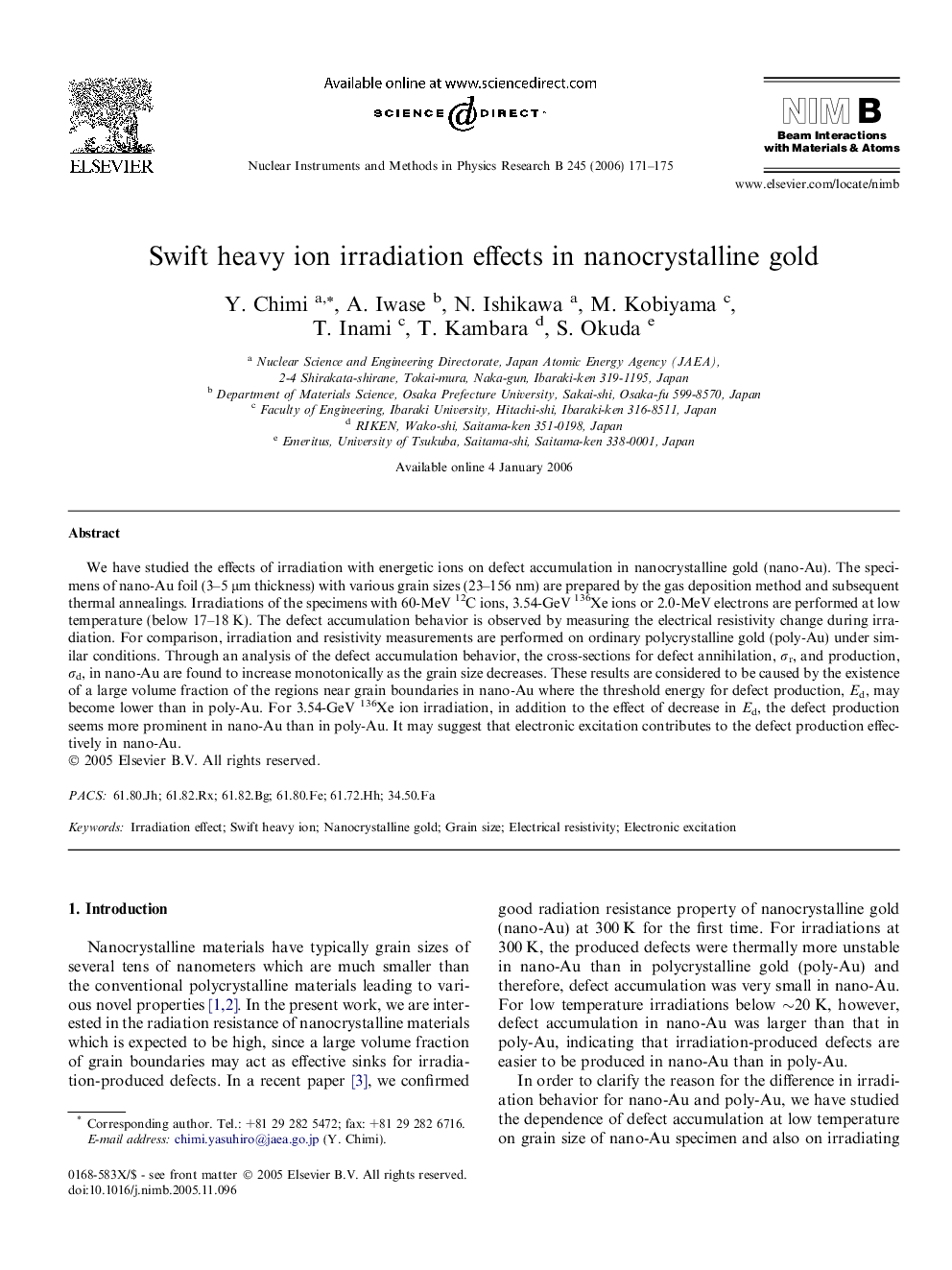| Article ID | Journal | Published Year | Pages | File Type |
|---|---|---|---|---|
| 1687167 | Nuclear Instruments and Methods in Physics Research Section B: Beam Interactions with Materials and Atoms | 2006 | 5 Pages |
We have studied the effects of irradiation with energetic ions on defect accumulation in nanocrystalline gold (nano-Au). The specimens of nano-Au foil (3–5 μm thickness) with various grain sizes (23–156 nm) are prepared by the gas deposition method and subsequent thermal annealings. Irradiations of the specimens with 60-MeV 12C ions, 3.54-GeV 136Xe ions or 2.0-MeV electrons are performed at low temperature (below 17–18 K). The defect accumulation behavior is observed by measuring the electrical resistivity change during irradiation. For comparison, irradiation and resistivity measurements are performed on ordinary polycrystalline gold (poly-Au) under similar conditions. Through an analysis of the defect accumulation behavior, the cross-sections for defect annihilation, σr, and production, σd, in nano-Au are found to increase monotonically as the grain size decreases. These results are considered to be caused by the existence of a large volume fraction of the regions near grain boundaries in nano-Au where the threshold energy for defect production, Ed, may become lower than in poly-Au. For 3.54-GeV 136Xe ion irradiation, in addition to the effect of decrease in Ed, the defect production seems more prominent in nano-Au than in poly-Au. It may suggest that electronic excitation contributes to the defect production effectively in nano-Au.
